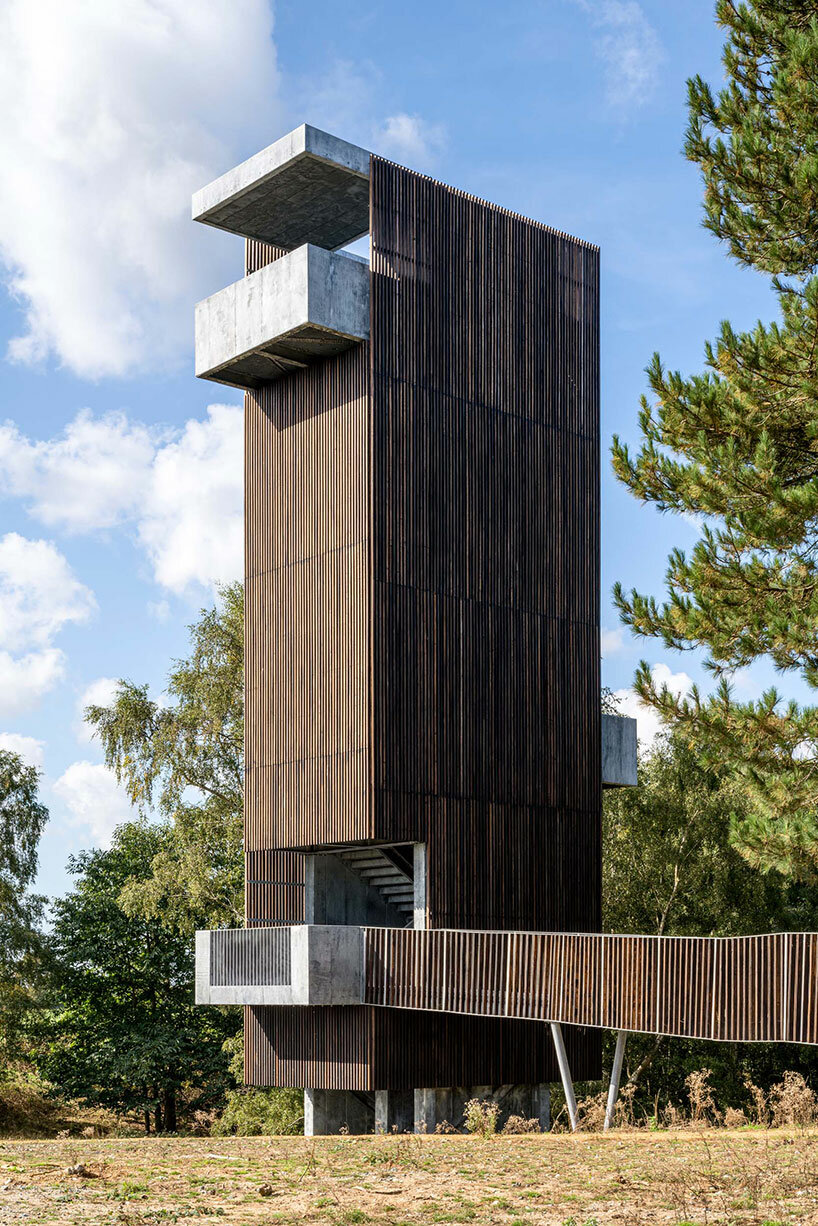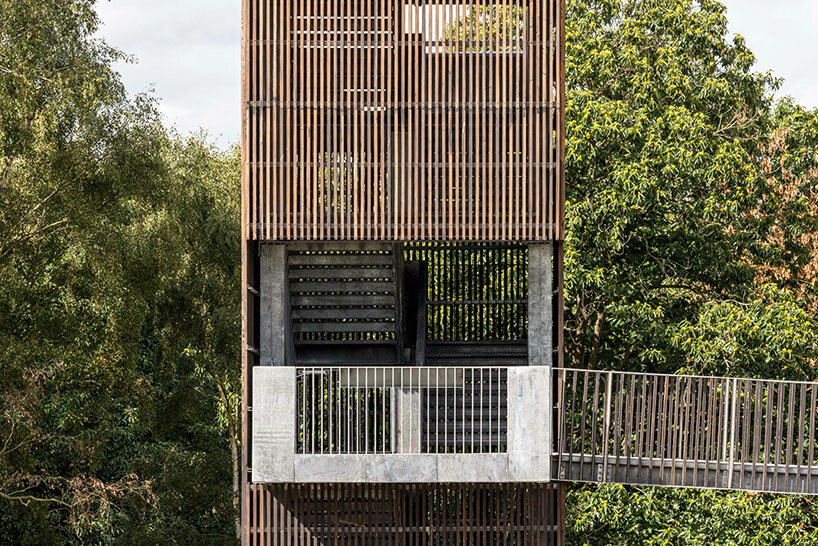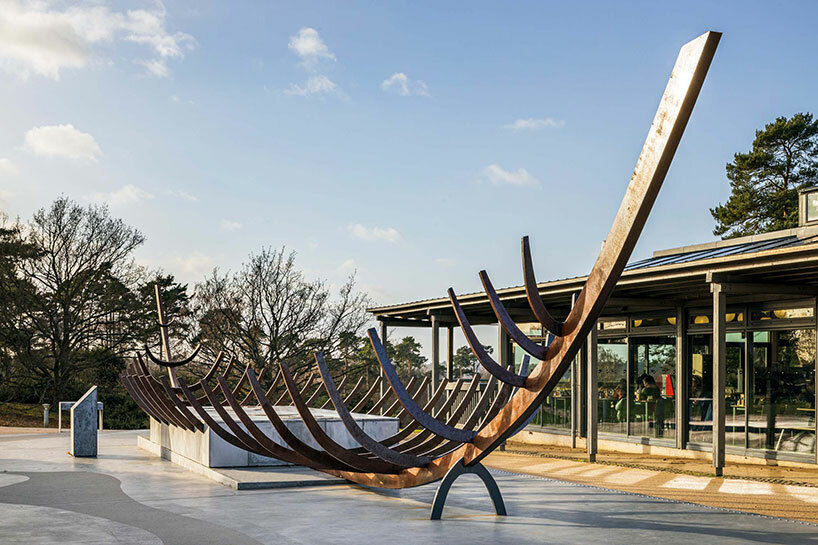this viewing platform brings sweeping views of historical burial floor sutton hoo
a sweeping perspective over the sutton hoo burial mounds
rising lightly above the rolling landscape of suffolk‘s sutton hoo archaeological site is a new viewing platform by nissen richards studio. the design team worked closely with the national trust to carefully re-choreograph the route at the anglo-saxon burial grounds to include new points of interest and exhibition displays. this network all culminates in the observatory which rises 17 meters (56 feet) and is wrapped in a light envelope of vertical timber slats. the work offers visitors a new vantage point over the area’s seventeen burial mounds, which date as far back as 625 BC.
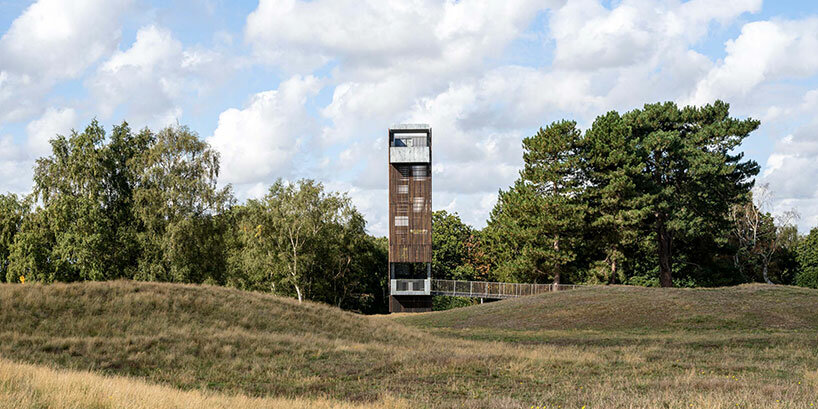 images © gareth gardner | @gardnergareth
images © gareth gardner | @gardnergareth
the curated journey by nissen richards studio
london-based nissen richards studio (see more here) designs its sutton hoo viewing platform as part of a larger journey across the grounds. the narrative begins at the entrance courtyard, in which is displayed a full-scale model of the site’s historic burial ship, crafted in sheet steel. the walking path leads visitors throughout the landscape, emphasizing the rolling topography by meandering through the area’s lowest points. the climactic arrival at the viewing tower — nestled within a dip in the earth and entered by way of a long ramp — lends the clearest picture of the undulating grounds.
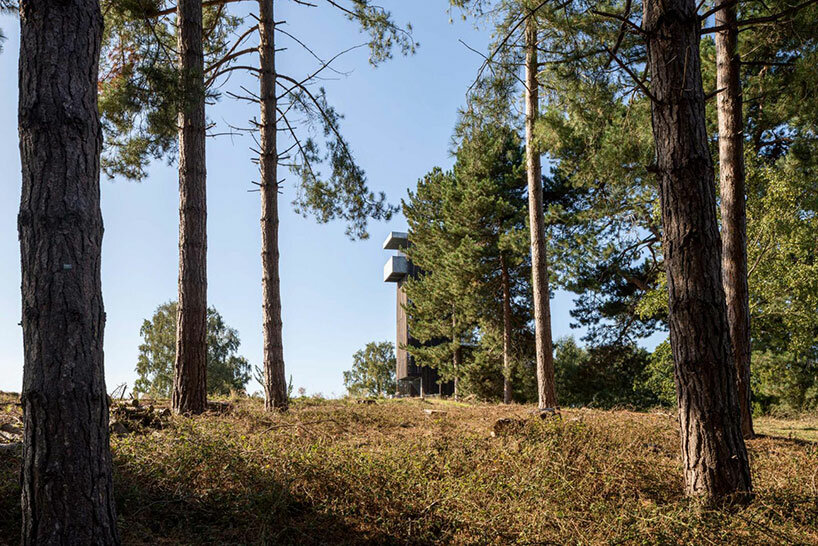
the architecture’s relationship with its important site
the sutton hoo viewing platform is intended to exist with respect for the archaeological important site. with its reduced footprint, the structure disrupts the ground as minimally as possible. studio co-director jim richards explains the process of working with the landscape to achieve this minimal impact: ‘getting planning and scheduled monument consent was something of a triumph. the location is reasonably discreet. it is also located in woodland and can’t be seen from the other side of the river.’
the tower visually blends into its natural surroundings with a permeable skin of charred larch, enclosing the patinated metal core and galvanized steel stair. eventually, the architecture will weather to become a silvery gray, matching the tones of the scotch pines from which it emerges.
